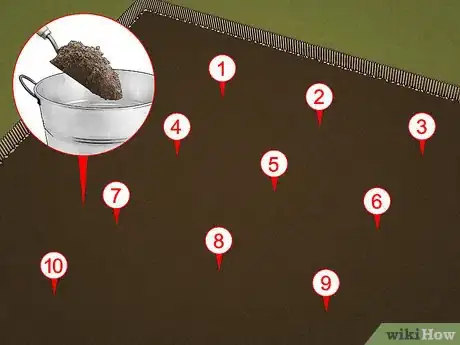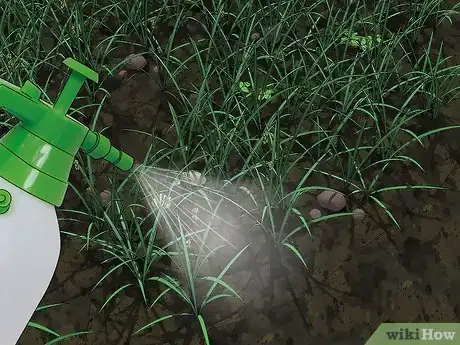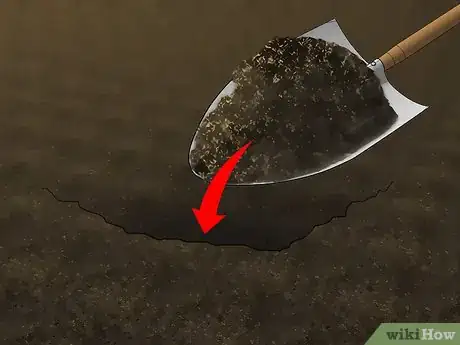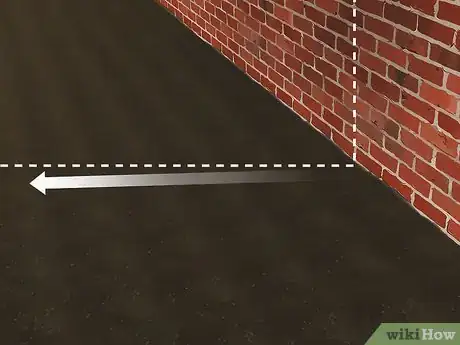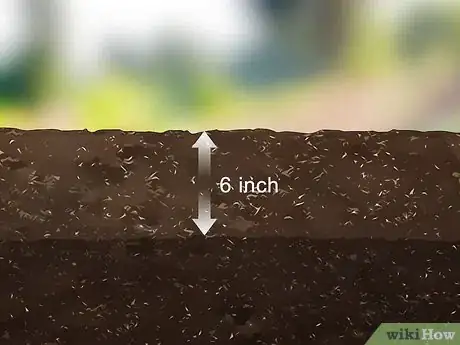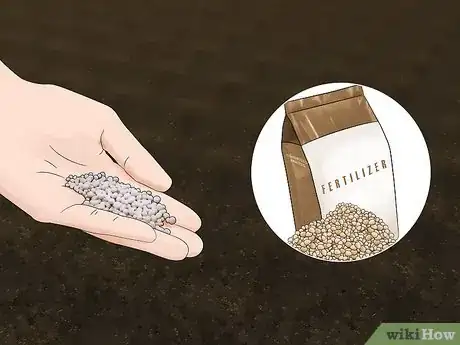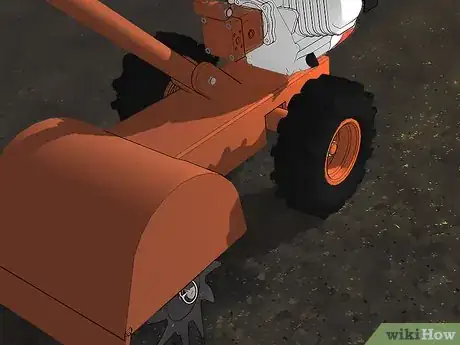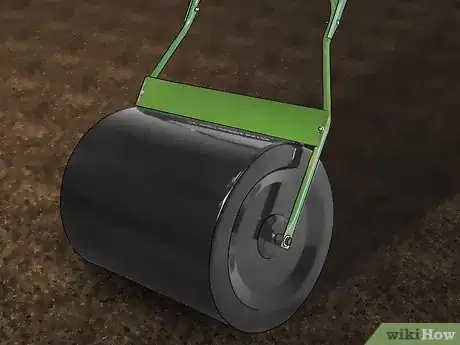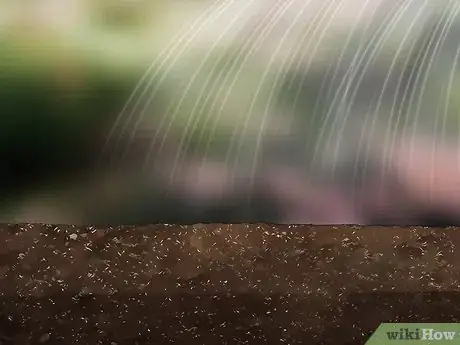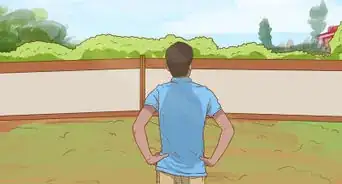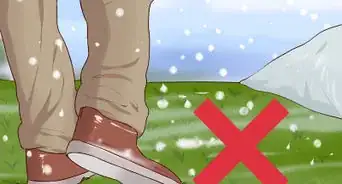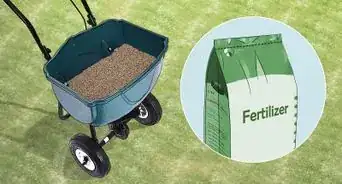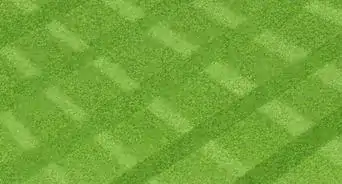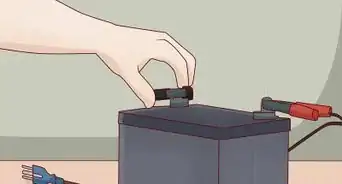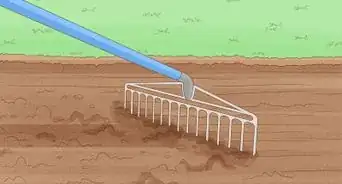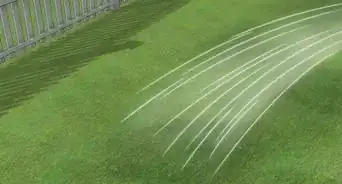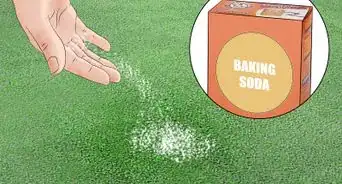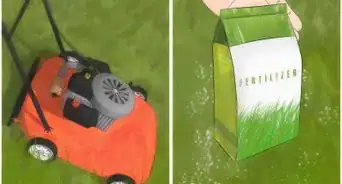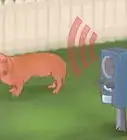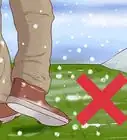This article was co-authored by Benjamin Hansen and by wikiHow staff writer, Kyle Hall. Benjamin Hansen is a Landscape Contractor and the Owner of Artscape Gardens, a boutique landscaping company in Los Angeles, California. With over 12 years of experience, Benjamin specializes in transforming properties into aesthetic, functional, and drought-tolerant oases. Benjamin uses color scheme, dimension, and water conscious spaces to inspire the design and installation of soft scape, hardscape, patios, pathways, irrigation, drainage, fencing, concrete, lighting, and electrical work. Artscape Gardens covers all areas of the C-27 landscape contractor classification.
This article has been viewed 78,755 times.
Sod can transform a dirt lot or dead area of grass into a lush, green lawn. If you want your sod to look even and healthy, take the time to prepare the soil before you lay the sod down.
Steps
Testing and Clearing Off Your Soil
-
1Have a sample of your soil tested. A soil test will help you figure out what you need to add to your soil so it’s healthy and ready for the sod. To collect a sample of your soil, fill a bucket with the top 4–6 inches (10–15 cm) of your soil from at least 10 different spots in the area you’re laying the sod down on. Take out any leaves or weeds from the soil. Then, contact your local extension office to find out how to submit your sample.[1]
- Send in your soil sample a month before you plan on laying down the sod so you have time to get the results back.
-
2Clear off any debris on the soil while you wait for the soil test results. Pick up branches, rocks, and any other objects scattered on the soil. Don’t lay your sod over any large objects or they could interfere with the sods growth. Also, objects underneath the sod will make the final result look lumpy and uneven.[2]Advertisement
-
3Kill unwanted weeds and grass with an herbicide. Controlling weeds is easier if it's done before sod is put down. Look for an herbicide that is nonselective, like glyphosate. Follow the application directions that come with the herbicide and apply it a month before you plan on laying down the sod.[3]
- Please note: The WHO considers glyphosate to be a probable human carcinogen. Its use is prohibited in some states and countries. Please check with your local laws and use caution if handling this chemical.
- You may need to do multiple applications spaced 2-4 weeks apart depending on the herbicide you're using.
- Use an herbicide with glyphosate, like Roundup, which will kill a variety of weeds even if the seeds are dormant in the subsoil rather than germinating in the topsoil.[4]
Grading Your Soil
-
1Flatten any mounds or high spots on your soil. Take an iron rake or shovel and break apart the high points in the soil. Then, spread the broken up dirt around so the area is level with the rest of the soil.[5]
-
2Fill in any dips in your soil. Dips will impact the appearance of the sod, and they can also lead to water build up, which can kill the new grass. Use the rake to push dirt into the low spots so they’re level with the rest of the soil.[6]
-
3Slope the soil away from any nearby buildings. That way water will drain away from the buildings instead of pooling next to them. If you’re working with a small area, use tools like a shovel and rake to slope the soil. If you’re working with a large area, you may need to rent a tractor with a grading blade attached. Slope the soil so it drops 1–4 feet (0.30–1.22 m) every 100 feet (30 m) of soil.[7]
Tilling and Smoothing Your Soil
-
1Add a 6 in (15 cm) layer of topsoil over your existing soil. Topsoil will make the soil healthier, which will help the sod grow. Any kind of regular topsoil will work. If you don’t have access to topsoil, you can use manure or compost instead.[8]
-
2Add a fertilizer once you get your soil test results back. Your soil test should tell you what nutrients your soil is lacking, and give recommendations on how much fertilizer to use and what kind you should get. Get a fertilizer that meets the recommendations in your soil test and apply it to the layer of topsoil you put down.[9]
- Fertilizer doesn't work well when it's used in the heat.[10]
-
3Use a rototiller to till the top 4 inches (10 cm) of the soil. Tilling the soil will help mix in the topsoil and fertilizer you added. It will also loosen the soil and make it easier for the sod roots to attach underground. Go over the surface of the soil with the rototiller 1-2 times. Avoid tilling the soil more than that or you could damage the structure of the soil.[11]
- If you don’t own a rototiller, look up rototiller rentals near you and rent one for the day.
- Note that a rototiller can trigger weed germination by adding oxygen to the top soil. You can minimize this by using a sod cutter instead.[12]
-
4Fine grade the soil using a heavy mat. Fine grading is the process of packing and smoothing the soil before you put the sod over it. Take a heavy mat and drag it over the surface of the soil several times until it’s smooth. If you’re working with a large area, it may be easier to use a lawn roller.[13]
- Don’t pack down the soil too much or the roots on the sod won’t attach properly. The top .5 inches (1.3 cm) of soil should be loose enough that when you walk across the soil your feet leave .5 in (1.3 cm) footprints.[14]
-
5Water the soil before you lay down the sod. Don’t lay down sod on dry soil or it won’t attach properly. You want the soil to be damp, not soaked. If you water the soil and it gets muddy, let it dry some before you lay down the sod.[15]
Expert Q&A
Did you know you can get expert answers for this article?
Unlock expert answers by supporting wikiHow
-
QuestionWhat should you put down before sod?
 Benjamin HansenBenjamin Hansen is a Landscape Contractor and the Owner of Artscape Gardens, a boutique landscaping company in Los Angeles, California. With over 12 years of experience, Benjamin specializes in transforming properties into aesthetic, functional, and drought-tolerant oases. Benjamin uses color scheme, dimension, and water conscious spaces to inspire the design and installation of soft scape, hardscape, patios, pathways, irrigation, drainage, fencing, concrete, lighting, and electrical work. Artscape Gardens covers all areas of the C-27 landscape contractor classification.
Benjamin HansenBenjamin Hansen is a Landscape Contractor and the Owner of Artscape Gardens, a boutique landscaping company in Los Angeles, California. With over 12 years of experience, Benjamin specializes in transforming properties into aesthetic, functional, and drought-tolerant oases. Benjamin uses color scheme, dimension, and water conscious spaces to inspire the design and installation of soft scape, hardscape, patios, pathways, irrigation, drainage, fencing, concrete, lighting, and electrical work. Artscape Gardens covers all areas of the C-27 landscape contractor classification.
Licensed Landscape Contractor
Things You’ll Need
- Plastic bucket
- Herbicide
- Rake
- Shovel
- Topsoil
- Fertilizer
- Rototiller
- Heavy mat
References
- ↑ https://www.extension.purdue.edu/extmedia/AY/AY-28-W.pdf
- ↑ https://www.extension.purdue.edu/extmedia/AY/AY-28-W.pdf
- ↑ https://www.extension.purdue.edu/extmedia/AY/AY-28-W.pdf
- ↑ Benjamin Hansen. Licensed Landscape Contractor. Expert Interview. 6 October 2020.
- ↑ https://www.thisoldhouse.com/ideas/how-to-lay-sod
- ↑ https://www.thisoldhouse.com/ideas/how-to-lay-sod
- ↑ https://extension.psu.edu/lawn-establishment
- ↑ https://www.extension.purdue.edu/extmedia/AY/AY-28-W.pdf
- ↑ https://www.extension.purdue.edu/extmedia/AY/AY-28-W.pdf
- ↑ Benjamin Hansen. Licensed Landscape Contractor. Expert Interview. 6 October 2020.
- ↑ https://extension.psu.edu/lawn-establishment
- ↑ Benjamin Hansen. Licensed Landscape Contractor. Expert Interview. 6 October 2020.
- ↑ https://extension.psu.edu/lawn-establishment
- ↑ https://www.extension.purdue.edu/extmedia/AY/AY-28-W.pdf
- ↑ https://www.extension.purdue.edu/extmedia/AY/AY-28-W.pdf
About This Article
The best way to prepare soil for sod is to take a sample of the soil and send it to your local extension office to be tested. While you’re waiting for the test results, clear off debris on the soil and kill unwanted weeds and grass with an herbicide. Slope the soil away from nearby buildings and level any holes or mounds. When the soil test comes back, choose a fertilizer for the soil based on the results. For more tips on getting soil ready for sod, like how to apply the fertilizer and a topsoil before you lay the sod down, read on!
